CocoDetection dalam PyTorch (2)
Beli Saya Kopi☕
*Siaran saya menerangkan MS COCO.
CocoDetection() boleh menggunakan set data MS COCO seperti yang ditunjukkan di bawah. *Ini adalah untuk train2017 dengan captions_train2017.json, instances_train2017.json dan person_keypoints_train2017.json, val2017 dengan captions_val2017.json, instances_val2017.json dan person_keypoints_val2020.json dan image_testinfo.json1. image_info_test-dev2017.json:
from torchvision.datasets import CocoDetection
cap_train2017_data = CocoDetection(
root="data/coco/imgs/train2017",
annFile="data/coco/anns/trainval2017/captions_train2017.json"
)
ins_train2017_data = CocoDetection(
root="data/coco/imgs/train2017",
annFile="data/coco/anns/trainval2017/instances_train2017.json"
)
pk_train2017_data = CocoDetection(
root="data/coco/imgs/train2017",
annFile="data/coco/anns/trainval2017/person_keypoints_train2017.json"
)
len(cap_train2017_data), len(ins_train2017_data), len(pk_train2017_data)
# (118287, 118287, 118287)
cap_val2017_data = CocoDetection(
root="data/coco/imgs/val2017",
annFile="data/coco/anns/trainval2017/captions_val2017.json"
)
ins_val2017_data = CocoDetection(
root="data/coco/imgs/val2017",
annFile="data/coco/anns/trainval2017/instances_val2017.json"
)
pk_val2017_data = CocoDetection(
root="data/coco/imgs/val2017",
annFile="data/coco/anns/trainval2017/person_keypoints_val2017.json"
)
len(cap_val2017_data), len(ins_val2017_data), len(pk_val2017_data)
# (5000, 5000, 5000)
test2017_data = CocoDetection(
root="data/coco/imgs/test2017",
annFile="data/coco/anns/test2017/image_info_test2017.json"
)
testdev2017_data = CocoDetection(
root="data/coco/imgs/test2017",
annFile="data/coco/anns/test2017/image_info_test-dev2017.json"
)
len(test2017_data), len(testdev2017_data)
# (40670, 20288)
cap_train2017_data[2]
# (<PIL.Image.Image image mode=RGB size=640x428>,
# [{'image_id': 30, 'id': 695774,
# 'caption': 'A flower vase is sitting on a porch stand.'},
# {'image_id': 30, 'id': 696557,
# 'caption': 'White vase with different colored flowers sitting inside of it. '},
# {'image_id': 30, 'id': 699041,
# 'caption': 'a white vase with many flowers on a stage'},
# {'image_id': 30, 'id': 701216,
# 'caption': 'A white vase filled with different colored flowers.'},
# {'image_id': 30, 'id': 702428,
# 'caption': 'A vase with red and white flowers outside on a sunny day.'}])
cap_train2017_data[47]
# (<PIL.Image.Image image mode=RGB size=640x427>,
# [{'image_id': 294, 'id': 549895,
# 'caption': 'A man standing in front of a microwave next to pots and pans.'},
# {'image_id': 294, 'id': 556411,
# 'caption': 'A man displaying pots and utensils on a wall.'},
# {'image_id': 294, 'id': 556507,
# 'caption': 'A man stands in a kitchen and motions towards pots and pans. '},
# {'image_id': 294, 'id': 556993,
# 'caption': 'a man poses in front of some pots and pans '},
# {'image_id': 294, 'id': 560728,
# 'caption': 'A man pointing to pots hanging from a pegboard on a gray wall.'}])
cap_train2017_data[64]
# (<PIL.Image.Image image mode=RGB size=480x640>,
# [{'image_id': 370, 'id': 468271,
# 'caption': 'A little girl holding wet broccoli in her hand. '},
# {'image_id': 370, 'id': 471646,
# 'caption': 'The young child is happily holding a fresh vegetable. '},
# {'image_id': 370, 'id': 475471,
# 'caption': 'A little girl holds a hand full of wet broccoli. '},
# {'image_id': 370, 'id': 475663,
# 'caption': 'A little girl holds a piece of broccoli towards the camera.'},
# {'image_id': 370, 'id': 822588,
# 'caption': 'a small kid holds on to some vegetables '}])
ins_train2017_data[2]
# (<PIL.Image.Image image mode=RGB size=640x428>,
# [{'segmentation': [[267.38, 330.14, 281.81, ..., 269.3, 329.18]],
# 'area': 47675.66289999999, 'iscrowd': 0, 'image_id': 30,
# 'bbox': [204.86, 31.02, 254.88, 324.12], 'category_id': 64,
# 'id': 291613},
# {'segmentation': ..., 'category_id': 86, 'id': 1155486}])
ins_train2017_data[47]
# (<PIL.Image.Image image mode=RGB size=640x427>,
# [{'segmentation': [[27.7, 423.27, 27.7, ..., 28.66, 427.0]],
# 'area': 64624.86664999999, 'iscrowd': 0, 'image_id': 294,
# 'bbox': [27.7, 69.83, 364.91, 357.17], 'category_id': 1,
# 'id': 470246},
# {'segmentation': ..., 'category_id': 50, 'id': 708187},
# ...
# {'segmentation': ..., 'category_id': 50, 'id': 2217190}])
ins_train2017_data[67]
# (<PIL.Image.Image image mode=RGB size=480x640>,
# [{'segmentation': [[90.81, 155.68, 90.81, ..., 98.02, 207.57]],
# 'area': 137679.34520000007, 'iscrowd': 0, 'image_id': 370,
# 'bbox': [90.81, 24.5, 389.19, 615.5], 'category_id': 1,
# 'id': 436109},
# {'segmentation': [[257.51, 446.79, 242.45, ..., 262.02, 460.34]],
# 'area': 43818.18095, 'iscrowd': 0, 'image_id': 370,
# 'bbox': [242.45, 257.05, 237.55, 243.95], 'category_id': 56,
# 'id': 1060727}])
pk_train2017_data[2]
# (<PIL.Image.Image image mode=RGB size=640x428>, [])
pk_train2017_data[47]
# (<PIL.Image.Image image mode=RGB size=640x427>,
# [{'segmentation': [[27.7, 423.27, 27.7, ..., 28.66, 427]],
# 'num_keypoints': 11, 'area': 64624.86665, 'iscrowd': 0,
# 'keypoints': [149, 133, 2, 159, ..., 0, 0], 'image_id': 294,
# 'bbox': [27.7, 69.83, 364.91, 357.17], 'category_id': 1,
# 'id': 470246}])
pk_train2017_data[64]
# (<PIL.Image.Image image mode=RGB size=480x640>,
# [{'segmentation': [[90.81, 155.68, 90.81, ..., 98.02, 207.57]],
# 'num_keypoints': 12, 'area': 137679.3452, 'iscrowd': 0,
# 'keypoints': [229, 171, 2, 263, ..., 0, 0], 'image_id': 370,
# 'bbox': [90.81, 24.5, 389.19, 615.5], 'category_id': 1,
# 'id': 436109}])
cap_val2017_data[2]
# (<PIL.Image.Image image mode=RGB size=640x483>,
# [{'image_id': 632, 'id': 301804,
# 'caption': 'Bedroom scene with a bookcase, blue comforter and window.'},
# {'image_id': 632, 'id': 302791,
# 'caption': 'A bedroom with a bookshelf full of books.'},
# {'image_id': 632, 'id': 305425,
# 'caption': 'This room has a bed with blue sheets and a large bookcase'},
# {'image_id': 632, 'id': 305953,
# 'caption': 'A bed and a mirror in a small room.'},
# {'image_id': 632, 'id': 306511,
# 'caption': 'a bed room with a neatly made bed a window and a book shelf'}])
cap_val2017_data[47]
# (<PIL.Image.Image image mode=RGB size=640x480>,
# [{'image_id': 5001, 'id': 542124,
# 'caption': 'A group of people cutting a ribbon on a street.'},
# {'image_id': 5001, 'id': 545685,
# 'caption': 'A man uses a pair of big scissors to cut a pink ribbon.'},
# {'image_id': 5001, 'id': 549285,
# 'caption': 'A man cutting a ribbon at a ceremony '},
# {'image_id': 5001, 'id': 549666,
# 'caption': 'A group of people on the sidewalk watching two young children.'},
# {'image_id': 5001, 'id': 549696,
# 'caption': 'A group of people holding a large pair of scissors to a ribbon.'}])
cap_val2017_data[64]
# (<PIL.Image.Image image mode=RGB size=375x500>,
# [{'image_id': 6763, 'id': 708378,
# 'caption': 'A man and a women posing next to one another in front of a table.'},
# {'image_id': 6763, 'id': 709983,
# 'caption': 'A man and woman hugging in a restaurant'},
# {'image_id': 6763, 'id': 711438,
# 'caption': 'A man and woman standing next to a table.'},
# {'image_id': 6763, 'id': 711723,
# 'caption': 'A happy man and woman pose for a picture.'},
# {'image_id': 6763, 'id': 714720,
# 'caption': 'A man and woman posing for a picture in a sports bar.'}])
ins_val2017_data[2]
# (<PIL.Image.Image image mode=RGB size=640x483>,
# [{'segmentation': [[5.45, 269.03, 25.08, ..., 3.27, 266.85]],
# 'area': 64019.87940000001, 'iscrowd': 0, 'image_id': 632,
# 'bbox': [3.27, 266.85, 401.23, 208.25], 'category_id': 65,
# 'id': 315724},
# {'segmentation': ..., 'category_id': 64, 'id': 1610466},
# ...
# {'segmentation': {'counts': [201255, 6, 328, 6, 142, ..., 4, 34074],
# 'size': [483, 640]}, 'area': 20933, 'iscrowd': 1, 'image_id': 632,
# 'bbox': [416, 43, 153, 303], 'category_id': 84,
# 'id': 908400000632}])
ins_val2017_data[47]
# (<PIL.Image.Image image mode=RGB size=640x480>,
# [{'segmentation': [[210.34, 204.76, 227.6, ..., 195.24, 211.24]],
# 'area': 5645.972500000001, 'iscrowd': 0, 'image_id': 5001,
# 'bbox': [173.66, 204.76, 107.87, 238.39], 'category_id': 87,
# 'id': 1158531},
# {'segmentation': ..., 'category_id': 1, 'id': 1201627},
# ...
# {'segmentation': {'counts': [251128, 24, 451, 32, 446, ..., 43, 353],
# 'size': [480, 640]}, 'area': 10841, 'iscrowd': 1, 'image_id': 5001,
# 'bbox': [523, 26, 116, 288], 'category_id': 1, 'id': 900100005001}])
ins_val2017_data[64]
# (<PIL.Image.Image image mode=RGB size=375x500>,
# [{'segmentation': [[232.06, 92.6, 369.96, ..., 223.09, 93.72]],
# 'area': 11265.648799999995, 'iscrowd': 0, 'image_id': 6763
# 'bbox': [219.73, 64.57, 151.35, 126.69], 'category_id': 72,
# 'id': 30601},
# {'segmentation': ..., 'category_id': 1, 'id': 197649},
# ...
# {'segmentation': ..., 'category_id': 1, 'id': 1228674}])
pk_val2017_data[2]
# (<PIL.Image.Image image mode=RGB size=640x483>, [])
pk_val2017_data[47]
# (<PIL.Image.Image image mode=RGB size=640x480>,
# [{'segmentation': [[42.07, 190.11, 45.3, ..., 48.54, 201.98]],
# 'num_keypoints': 8, 'area': 5156.63, 'iscrowd': 0,
# 'keypoints': [58, 56, 2, 61, ..., 0, 0], 'image_id': 5001,
# 'bbox': [10.79, 32.63, 58.24, 169.35], 'category_id': 1,
# 'id': 1201627},
# {'segmentation': ..., 'category_id': 1, 'id': 1220394},
# ...
# {'segmentation': {'counts': [251128, 24, 451, 32, 446, ..., 43, 353], # 'size': [480, 640]}, 'num_keypoints': 0, 'area': 10841,
# 'iscrowd': 1, 'keypoints': [0, 0, 0, 0, ..., 0, 0],
# 'image_id': 5001, 'bbox': [523, 26, 116, 288],
# 'category_id': 1, 'id': 900100005001}])
pk_val2017_data[64]
# (<PIL.Image.Image image mode=RGB size=375x500>,
# [{'segmentation': [[94.38, 462.92, 141.57, ..., 100.27, 459.94]],
# 'num_keypoints': 10, 'area': 36153.48825, 'iscrowd': 0,
# 'keypoints': [228, 202, 2, 252, ..., 0, 0], 'image_id': 6763,
# 'bbox': [79.48, 131.87, 254.23, 331.05], 'category_id': 1,
# 'id': 197649},
# {'segmentation': ..., 'category_id': 1, 'id': 212640},
# ...
# {'segmentation': ..., 'category_id': 1, 'id': 1228674}])
test2017_data[2]
# (<PIL.Image.Image image mode=RGB size=640x427>, [])
test2017_data[47]
# (<PIL.Image.Image image mode=RGB size=640x406>, [])
test2017_data[64]
# (<PIL.Image.Image image mode=RGB size=640x427>, [])
testdev2017_data[2]
# (<PIL.Image.Image image mode=RGB size=640x427>, [])
testdev2017_data[47]
# (<PIL.Image.Image image mode=RGB size=480x640>, [])
testdev2017_data[64]
# (<PIL.Image.Image image mode=RGB size=640x480>, [])
import matplotlib.pyplot as plt
from matplotlib.patches import Polygon, Rectangle
import numpy as np
from pycocotools import mask
# `show_images1()` doesn't work very well for the images with
# segmentations and keypoints so for them, use `show_images2()` which
# more uses the original coco functions.
def show_images1(data, ims, main_title=None):
file = data.root.split('/')[-1]
fig, axes = plt.subplots(nrows=1, ncols=3, figsize=(14, 8))
fig.suptitle(t=main_title, y=0.9, fontsize=14)
x_crd = 0.02
for i, axis in zip(ims, axes.ravel()):
if data[i][1] and "caption" in data[i][1][0]:
im, anns = data[i]
axis.imshow(X=im)
axis.set_title(label=anns[0]["image_id"])
y_crd = 0.0
for ann in anns:
text_list = ann["caption"].split()
if len(text_list) > 9:
text = " ".join(text_list[0:10]) + " ..."
else:
text = " ".join(text_list)
plt.figtext(x=x_crd, y=y_crd, fontsize=10,
s=f'{ann["id"]}:\n{text}')
y_crd -= 0.06
x_crd += 0.325
if i == 2 and file == "val2017":
x_crd += 0.06
if data[i][1] and "segmentation" in data[i][1][0]:
im, anns = data[i]
axis.imshow(X=im)
axis.set_title(label=anns[0]["image_id"])
for ann in anns:
if "counts" in ann['segmentation']:
seg = ann['segmentation']
# rle is Run Length Encoding.
uncompressed_rle = [seg['counts']]
height, width = seg['size']
compressed_rle = mask.frPyObjects(pyobj=uncompressed_rle,
h=height, w=width)
# rld is Run Length Decoding.
compressed_rld = mask.decode(rleObjs=compressed_rle)
y_plts, x_plts = np.nonzero(a=np.squeeze(a=compressed_rld))
axis.plot(x_plts, y_plts, color='yellow')
else:
for seg in ann['segmentation']:
seg_arrs = np.split(ary=np.array(seg),
indices_or_sections=len(seg)/2)
poly = Polygon(xy=seg_arrs,
facecolor="lightgreen", alpha=0.7)
axis.add_patch(p=poly)
x_plts = [seg_arr[0] for seg_arr in seg_arrs]
y_plts = [seg_arr[1] for seg_arr in seg_arrs]
axis.plot(x_plts, y_plts, color='yellow')
x, y, w, h = ann['bbox']
rect = Rectangle(xy=(x, y), width=w, height=h,
linewidth=3, edgecolor='r',
facecolor='none', zorder=2)
axis.add_patch(p=rect)
if data[i][1] and 'keypoints' in data[i][1][0]:
kps = ann['keypoints']
kps_arrs = np.split(ary=np.array(kps),
indices_or_sections=len(kps)/3)
x_plts = [kps_arr[0] for kps_arr in kps_arrs]
y_plts = [kps_arr[1] for kps_arr in kps_arrs]
nonzeros_x_plts = []
nonzeros_y_plts = []
for x_plt, y_plt in zip(x_plts, y_plts):
if x_plt == 0 and y_plt == 0:
continue
nonzeros_x_plts.append(x_plt)
nonzeros_y_plts.append(y_plt)
axis.scatter(x=nonzeros_x_plts, y=nonzeros_y_plts,
color='yellow')
# ↓ ↓ ↓ ↓ ↓ ↓ ↓ ↓ Bad result ↓ ↓ ↓ ↓ ↓ ↓ ↓ ↓
# axis.plot(nonzeros_x_plts, nonzeros_y_plts)
if not data[i][1]:
im, _ = data[i]
axis.imshow(X=im)
fig.tight_layout()
plt.show()
ims = (2, 47, 64)
show_images1(data=cap_train2017_data, ims=ims,
main_title="cap_train2017_data")
show_images1(data=ins_train2017_data, ims=ims,
main_title="ins_train2017_data")
show_images1(data=pk_train2017_data, ims=ims,
main_title="pk_train2017_data")
print()
show_images1(data=cap_val2017_data, ims=ims,
main_title="cap_val2017_data")
show_images1(data=ins_val2017_data, ims=ims,
main_title="ins_val2017_data")
show_images1(data=pk_val2017_data, ims=ims,
main_title="pk_val2017_data")
print()
show_images(data=test2017_data, ims=ims,
main_title="test2017_data")
show_images(data=testdev2017_data, ims=ims,
main_title="testdev2017_data")
# `show_images2()` works very well for the images with segmentations and
# keypoints.
def show_images2(data, index, main_title=None):
img_set = data[index]
img, img_anns = img_set
if img_anns and "segmentation" in img_anns[0]:
img_id = img_anns[0]['image_id']
coco = data.coco
def show_image(imgIds, areaRng=[],
iscrowd=None, draw_bbox=False):
plt.figure(figsize=(11, 8))
plt.imshow(X=img)
plt.suptitle(t=main_title, y=1, fontsize=14)
plt.title(label=img_id, fontsize=14)
anns_ids = coco.getAnnIds(imgIds=img_id,
areaRng=areaRng, iscrowd=iscrowd)
anns = coco.loadAnns(ids=anns_ids)
coco.showAnns(anns=anns, draw_bbox=draw_bbox)
plt.show()
show_image(imgIds=img_id, draw_bbox=True)
show_image(imgIds=img_id, draw_bbox=False)
show_image(imgIds=img_id, iscrowd=False, draw_bbox=True)
show_image(imgIds=img_id, areaRng=[0, 5000], draw_bbox=True)
elif img_anns and not "segmentation" in img_anns[0]:
plt.figure(figsize=(11, 8))
img_id = img_anns[0]['image_id']
plt.imshow(X=img)
plt.suptitle(t=main_title, y=1, fontsize=14)
plt.title(label=img_id, fontsize=14)
plt.show()
elif not img_anns:
plt.figure(figsize=(11, 8))
plt.imshow(X=img)
plt.suptitle(t=main_title, y=1, fontsize=14)
plt.show()
show_images2(data=ins_val2017_data, index=2,
main_title="ins_val2017_data")
print()
show_images2(data=pk_val2017_data, index=2,
main_title="pk_val2017_data")
print()
show_images2(data=ins_val2017_data, index=47,
main_title="ins_val2017_data")
print()
show_images2(data=pk_val2017_data, index=47,
main_title="pk_val2017_data")
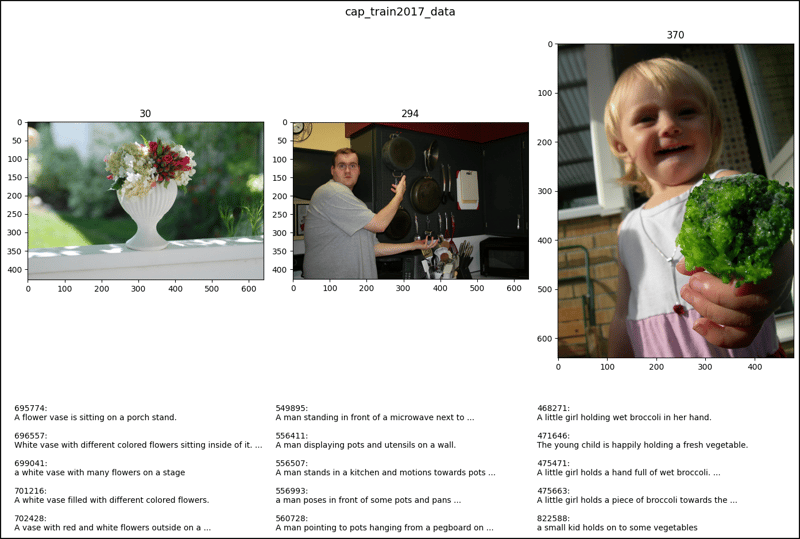
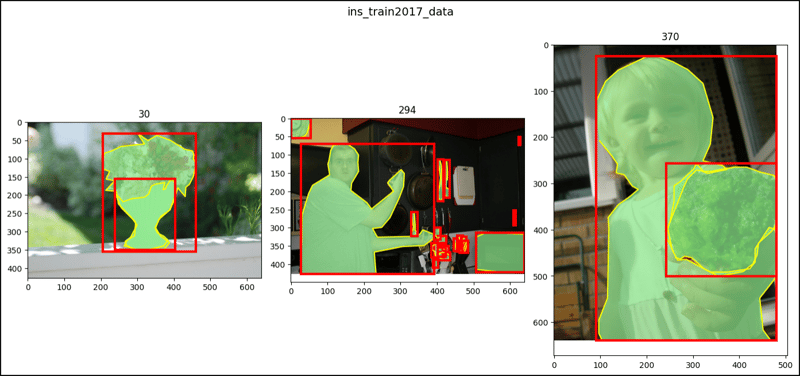
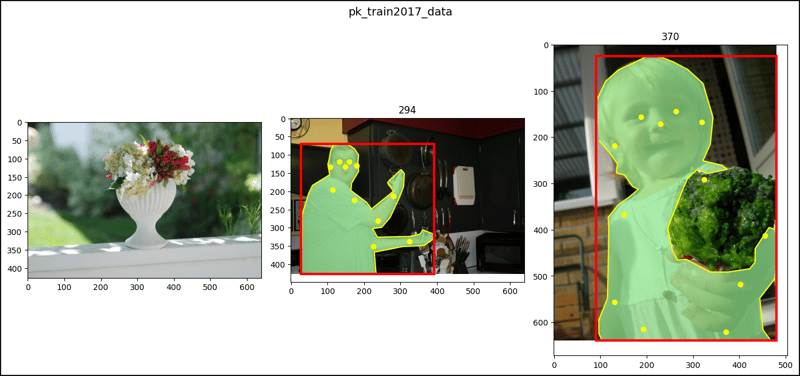
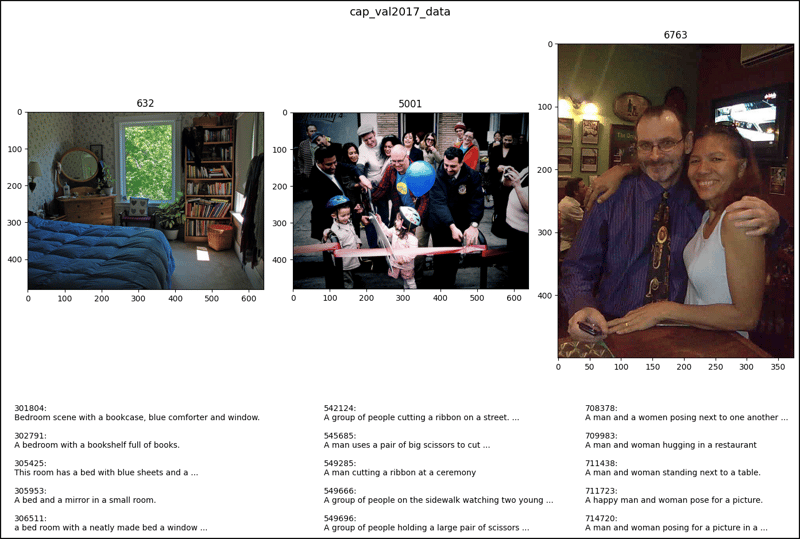
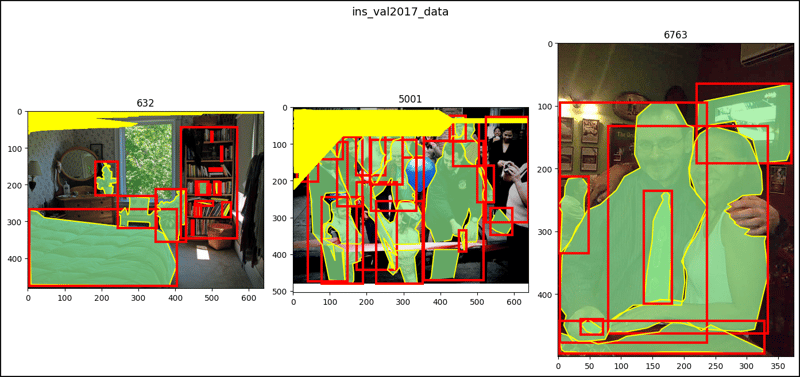
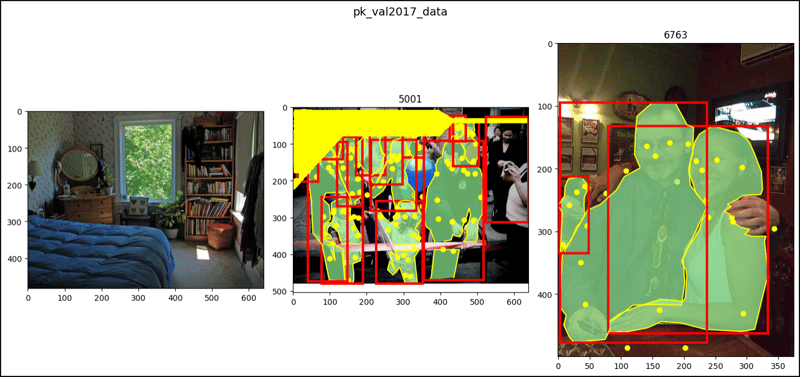
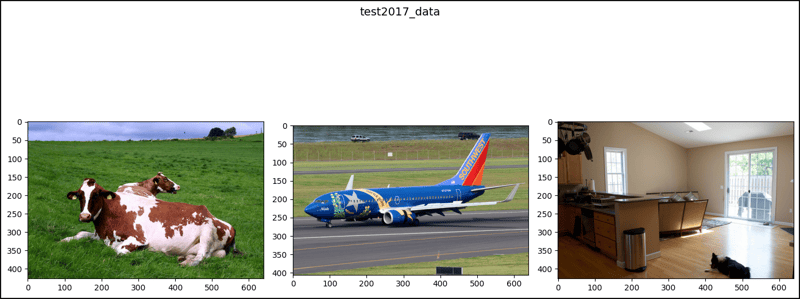
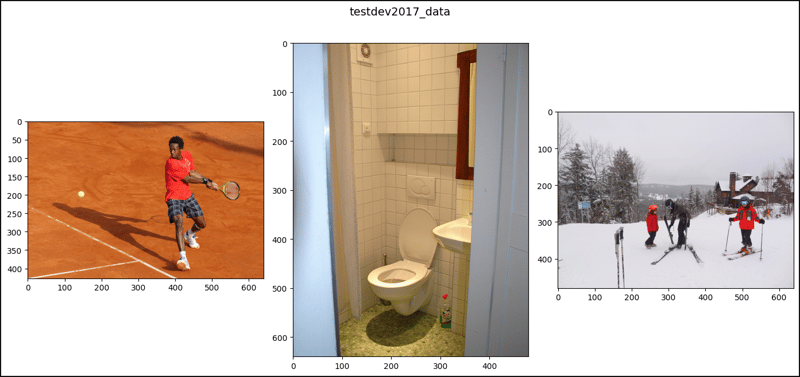
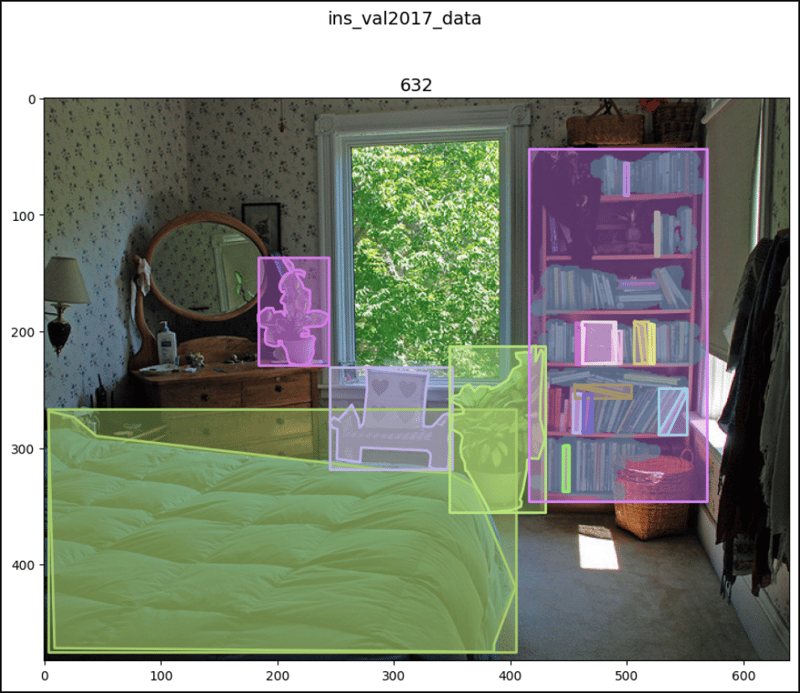
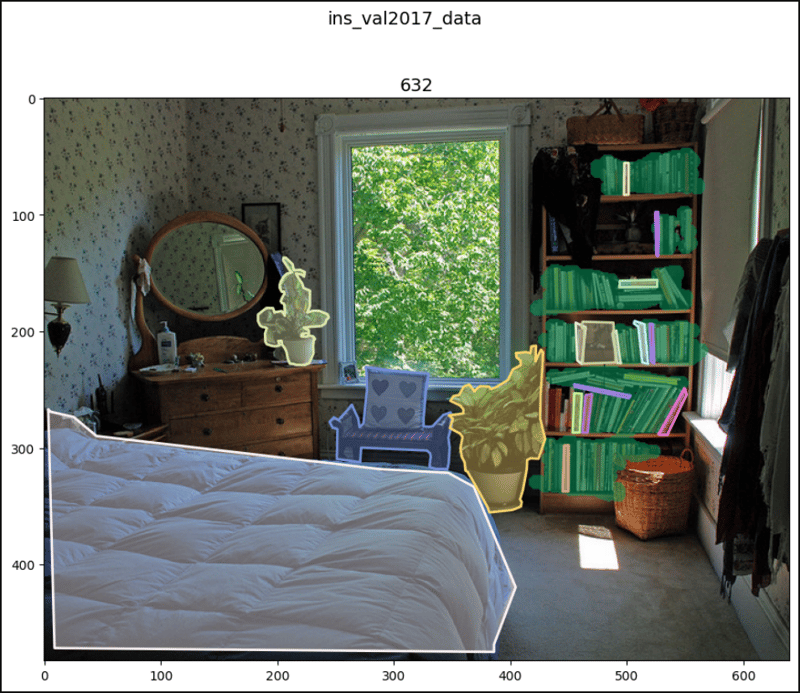
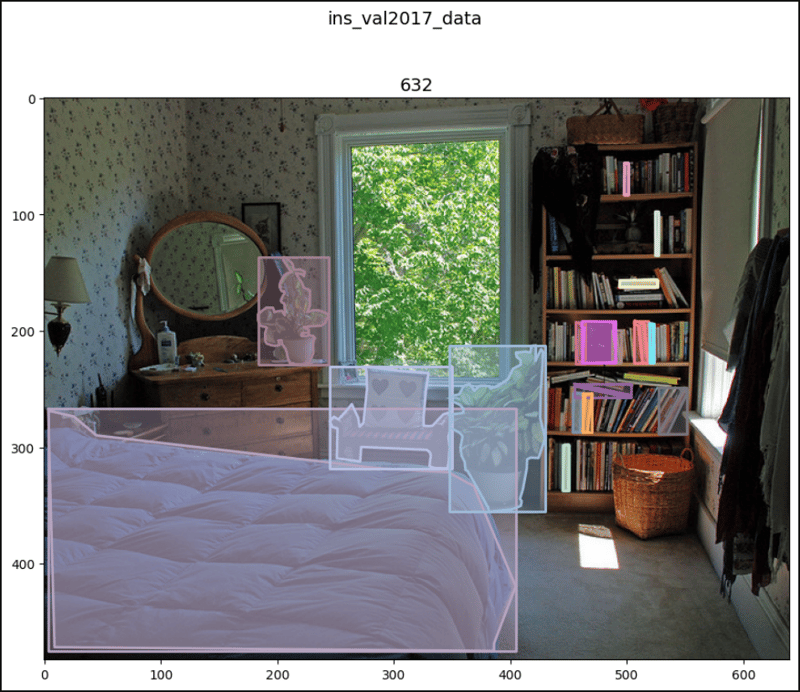
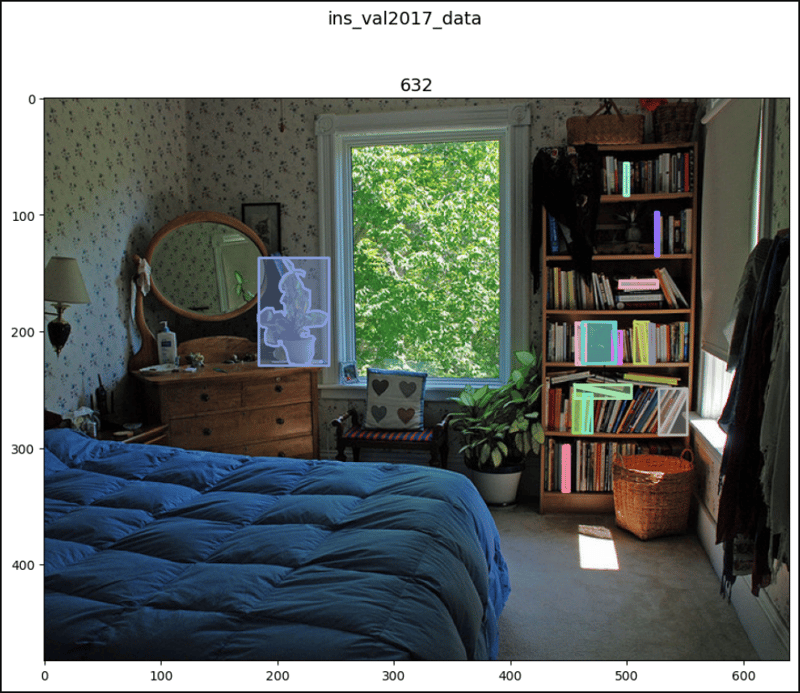

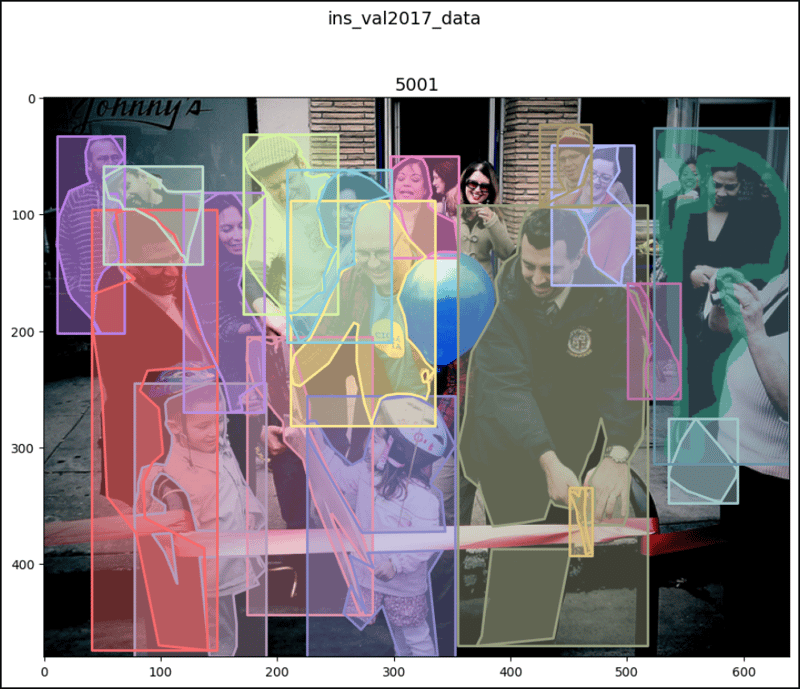
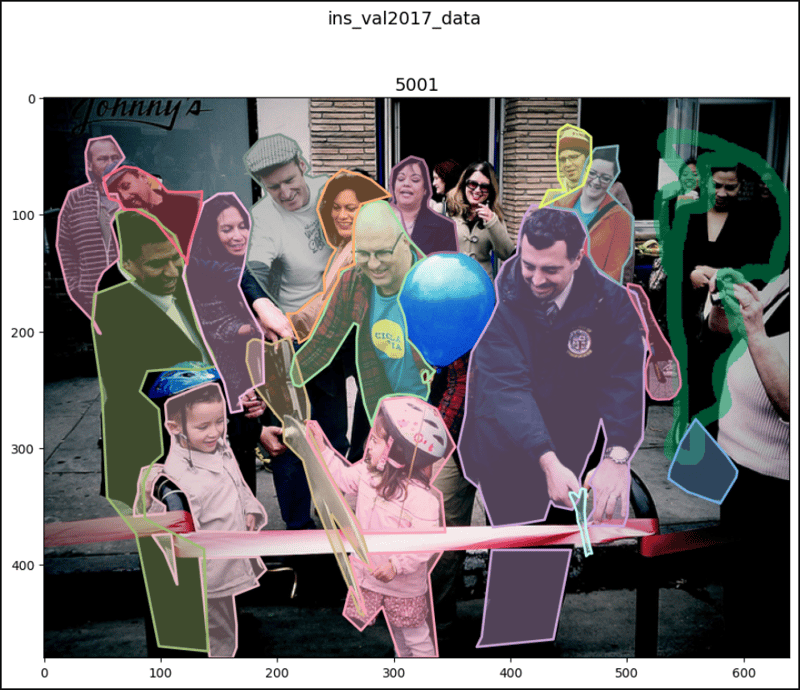
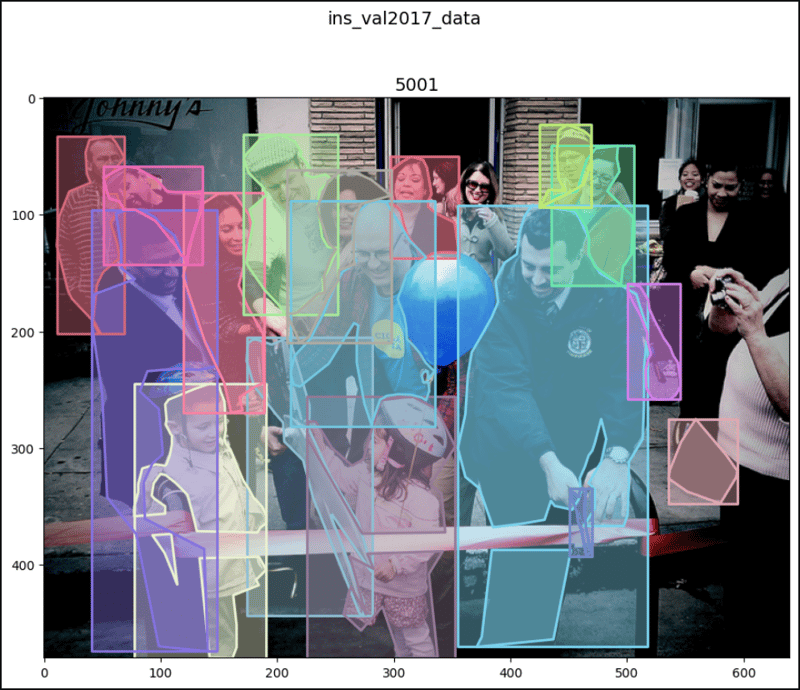
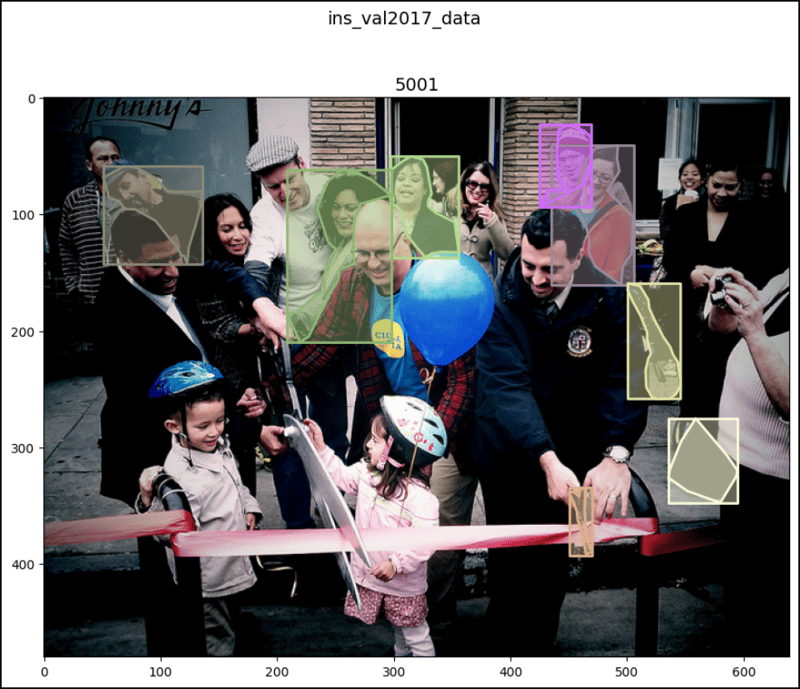
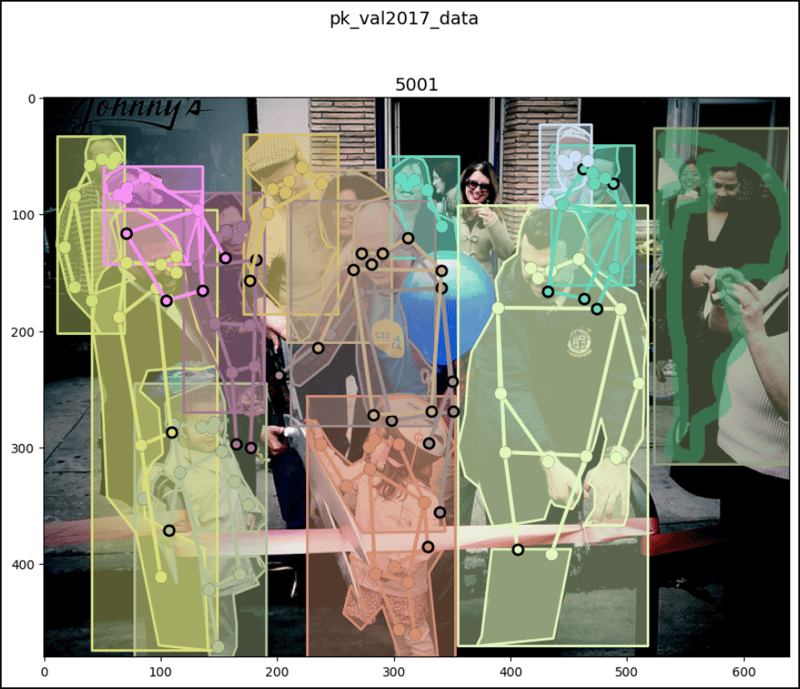
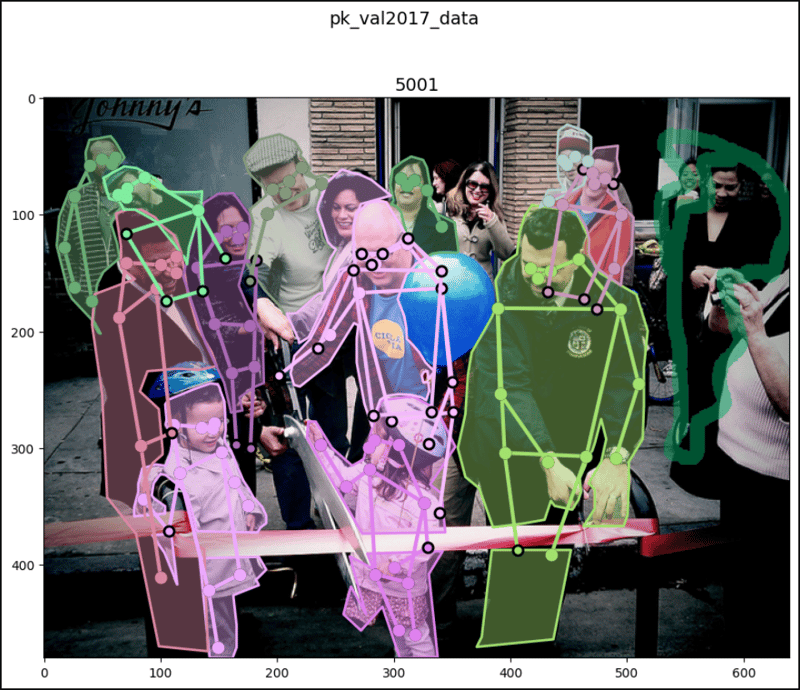
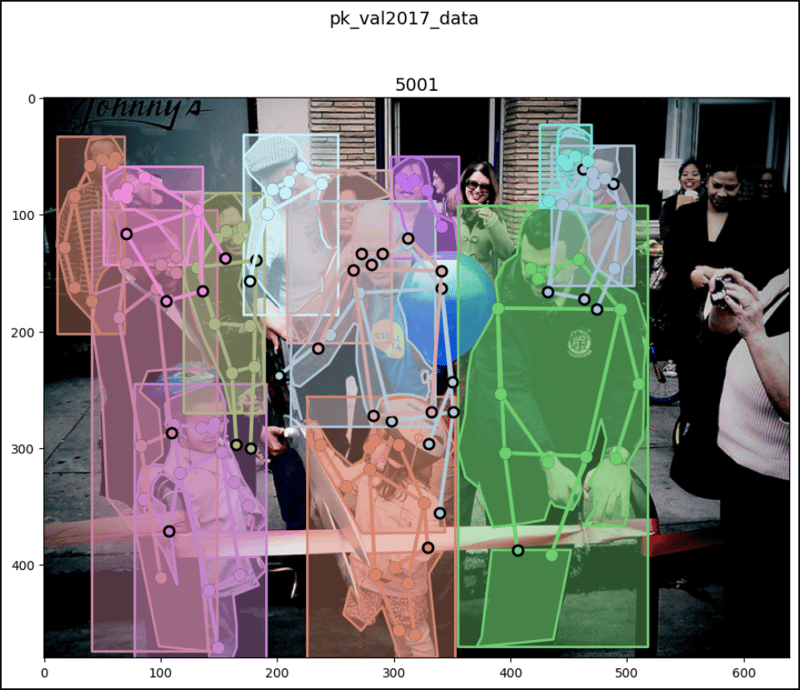
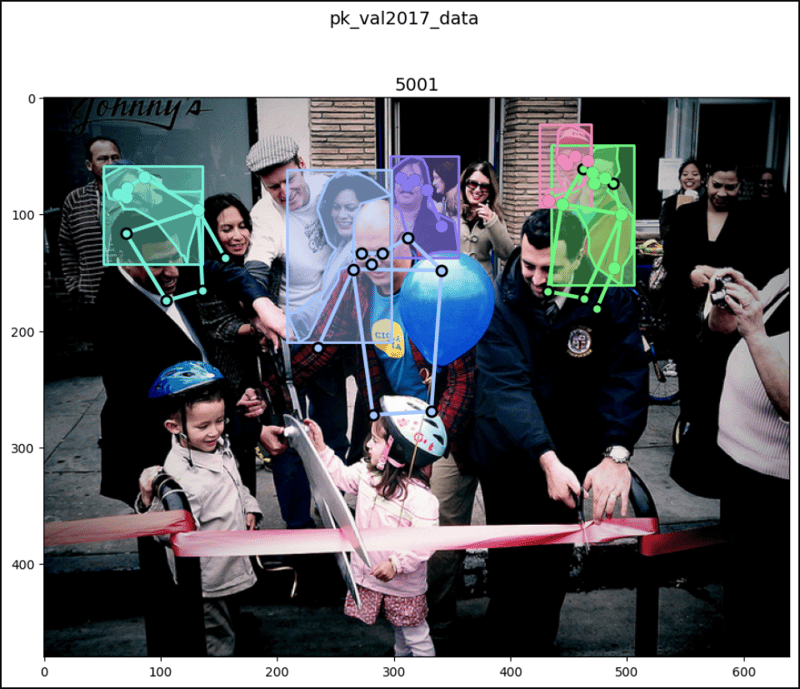
Atas ialah kandungan terperinci CocoDetection dalam PyTorch (2). Untuk maklumat lanjut, sila ikut artikel berkaitan lain di laman web China PHP!

Alat AI Hot

Undresser.AI Undress
Apl berkuasa AI untuk mencipta foto bogel yang realistik

AI Clothes Remover
Alat AI dalam talian untuk mengeluarkan pakaian daripada foto.

Undress AI Tool
Gambar buka pakaian secara percuma

Clothoff.io
Penyingkiran pakaian AI

Video Face Swap
Tukar muka dalam mana-mana video dengan mudah menggunakan alat tukar muka AI percuma kami!

Artikel Panas

Alat panas

Notepad++7.3.1
Editor kod yang mudah digunakan dan percuma

SublimeText3 versi Cina
Versi Cina, sangat mudah digunakan

Hantar Studio 13.0.1
Persekitaran pembangunan bersepadu PHP yang berkuasa

Dreamweaver CS6
Alat pembangunan web visual

SublimeText3 versi Mac
Perisian penyuntingan kod peringkat Tuhan (SublimeText3)

Topik panas
 1672
1672
 14
14
 1428
1428
 52
52
 1332
1332
 25
25
 1276
1276
 29
29
 1256
1256
 24
24
 Python vs C: Lengkung pembelajaran dan kemudahan penggunaan
Apr 19, 2025 am 12:20 AM
Python vs C: Lengkung pembelajaran dan kemudahan penggunaan
Apr 19, 2025 am 12:20 AM
Python lebih mudah dipelajari dan digunakan, manakala C lebih kuat tetapi kompleks. 1. Sintaks Python adalah ringkas dan sesuai untuk pemula. Penaipan dinamik dan pengurusan memori automatik menjadikannya mudah digunakan, tetapi boleh menyebabkan kesilapan runtime. 2.C menyediakan kawalan peringkat rendah dan ciri-ciri canggih, sesuai untuk aplikasi berprestasi tinggi, tetapi mempunyai ambang pembelajaran yang tinggi dan memerlukan memori manual dan pengurusan keselamatan jenis.
 Python dan Masa: Memanfaatkan masa belajar anda
Apr 14, 2025 am 12:02 AM
Python dan Masa: Memanfaatkan masa belajar anda
Apr 14, 2025 am 12:02 AM
Untuk memaksimumkan kecekapan pembelajaran Python dalam masa yang terhad, anda boleh menggunakan modul, masa, dan modul Python. 1. Modul DateTime digunakan untuk merakam dan merancang masa pembelajaran. 2. Modul Masa membantu menetapkan kajian dan masa rehat. 3. Modul Jadual secara automatik mengatur tugas pembelajaran mingguan.
 Python vs C: Meneroka Prestasi dan Kecekapan
Apr 18, 2025 am 12:20 AM
Python vs C: Meneroka Prestasi dan Kecekapan
Apr 18, 2025 am 12:20 AM
Python lebih baik daripada C dalam kecekapan pembangunan, tetapi C lebih tinggi dalam prestasi pelaksanaan. 1. Sintaks ringkas Python dan perpustakaan yang kaya meningkatkan kecekapan pembangunan. 2. Ciri-ciri jenis kompilasi dan kawalan perkakasan meningkatkan prestasi pelaksanaan. Apabila membuat pilihan, anda perlu menimbang kelajuan pembangunan dan kecekapan pelaksanaan berdasarkan keperluan projek.
 Pembelajaran Python: Adakah 2 jam kajian harian mencukupi?
Apr 18, 2025 am 12:22 AM
Pembelajaran Python: Adakah 2 jam kajian harian mencukupi?
Apr 18, 2025 am 12:22 AM
Adakah cukup untuk belajar Python selama dua jam sehari? Ia bergantung pada matlamat dan kaedah pembelajaran anda. 1) Membangunkan pelan pembelajaran yang jelas, 2) Pilih sumber dan kaedah pembelajaran yang sesuai, 3) mengamalkan dan mengkaji semula dan menyatukan amalan tangan dan mengkaji semula dan menyatukan, dan anda secara beransur-ansur boleh menguasai pengetahuan asas dan fungsi lanjutan Python dalam tempoh ini.
 Python vs C: Memahami perbezaan utama
Apr 21, 2025 am 12:18 AM
Python vs C: Memahami perbezaan utama
Apr 21, 2025 am 12:18 AM
Python dan C masing -masing mempunyai kelebihan sendiri, dan pilihannya harus berdasarkan keperluan projek. 1) Python sesuai untuk pembangunan pesat dan pemprosesan data kerana sintaks ringkas dan menaip dinamik. 2) C sesuai untuk prestasi tinggi dan pengaturcaraan sistem kerana menaip statik dan pengurusan memori manual.
 Yang merupakan sebahagian daripada Perpustakaan Standard Python: Senarai atau Array?
Apr 27, 2025 am 12:03 AM
Yang merupakan sebahagian daripada Perpustakaan Standard Python: Senarai atau Array?
Apr 27, 2025 am 12:03 AM
Pythonlistsarepartofthestandardlibrary, sementara
 Python: Automasi, skrip, dan pengurusan tugas
Apr 16, 2025 am 12:14 AM
Python: Automasi, skrip, dan pengurusan tugas
Apr 16, 2025 am 12:14 AM
Python cemerlang dalam automasi, skrip, dan pengurusan tugas. 1) Automasi: Sandaran fail direalisasikan melalui perpustakaan standard seperti OS dan Shutil. 2) Penulisan Skrip: Gunakan Perpustakaan Psutil untuk memantau sumber sistem. 3) Pengurusan Tugas: Gunakan perpustakaan jadual untuk menjadualkan tugas. Kemudahan penggunaan Python dan sokongan perpustakaan yang kaya menjadikannya alat pilihan di kawasan ini.
 Python untuk pengkomputeran saintifik: rupa terperinci
Apr 19, 2025 am 12:15 AM
Python untuk pengkomputeran saintifik: rupa terperinci
Apr 19, 2025 am 12:15 AM
Aplikasi Python dalam pengkomputeran saintifik termasuk analisis data, pembelajaran mesin, simulasi berangka dan visualisasi. 1.Numpy menyediakan susunan pelbagai dimensi yang cekap dan fungsi matematik. 2. Scipy memanjangkan fungsi numpy dan menyediakan pengoptimuman dan alat algebra linear. 3. Pandas digunakan untuk pemprosesan dan analisis data. 4.Matplotlib digunakan untuk menghasilkan pelbagai graf dan hasil visual.




